How To Drive It Like Scottie Scheffler!
PGA Professional Joe Ferguson takes a closer look at how the world number one excels from the tee and what you can learn from his approach…
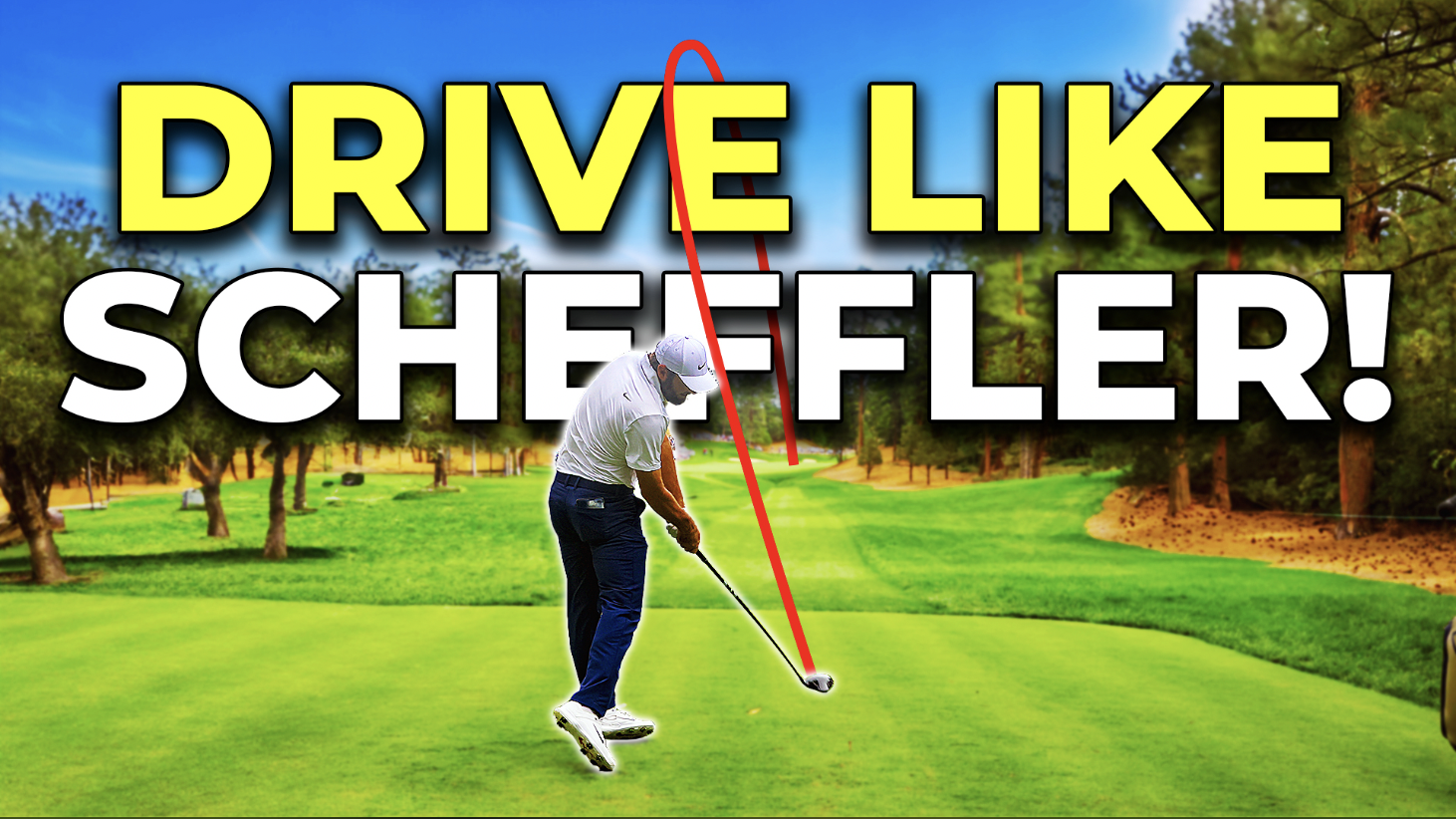

In 2024, Scottie Scheffler compiled one of the most impressive seasons of golf in history. World number one, Masters Champion, Olympic Gold medalist, and FedEx Cup winner, to name but a few of his achievements, Scheffler has achieved this through some exceptional tee-to-green statistics.
WATCH: PGA Pro Joe Ferguson demonstrates Scottie Scheffler's driving secrets!
Whilst Scheffler is far from slow in terms of club head speed, he seems to punch above his weight a little in terms of distance output. Sure he uses one of the best drivers in the TaylorMade Qi10 which certainly helps, but I believe that is down to his clever variance of shot shape and trajectory to maximize his distance. Here’s how he does it...
Increasing height downwind

Increasing height is one of Scheffler'e keys downwind.
Scheffler is a master of making the conditions work for him off the tee, so very often he looks to increase his peak height when there is a helping breeze, and he does so with some very simple changes to his setup.
Firstly, after slightly increasing the tee height, Sheffler moves the ball up in his stance a little to promote a more ascending blow at impact.
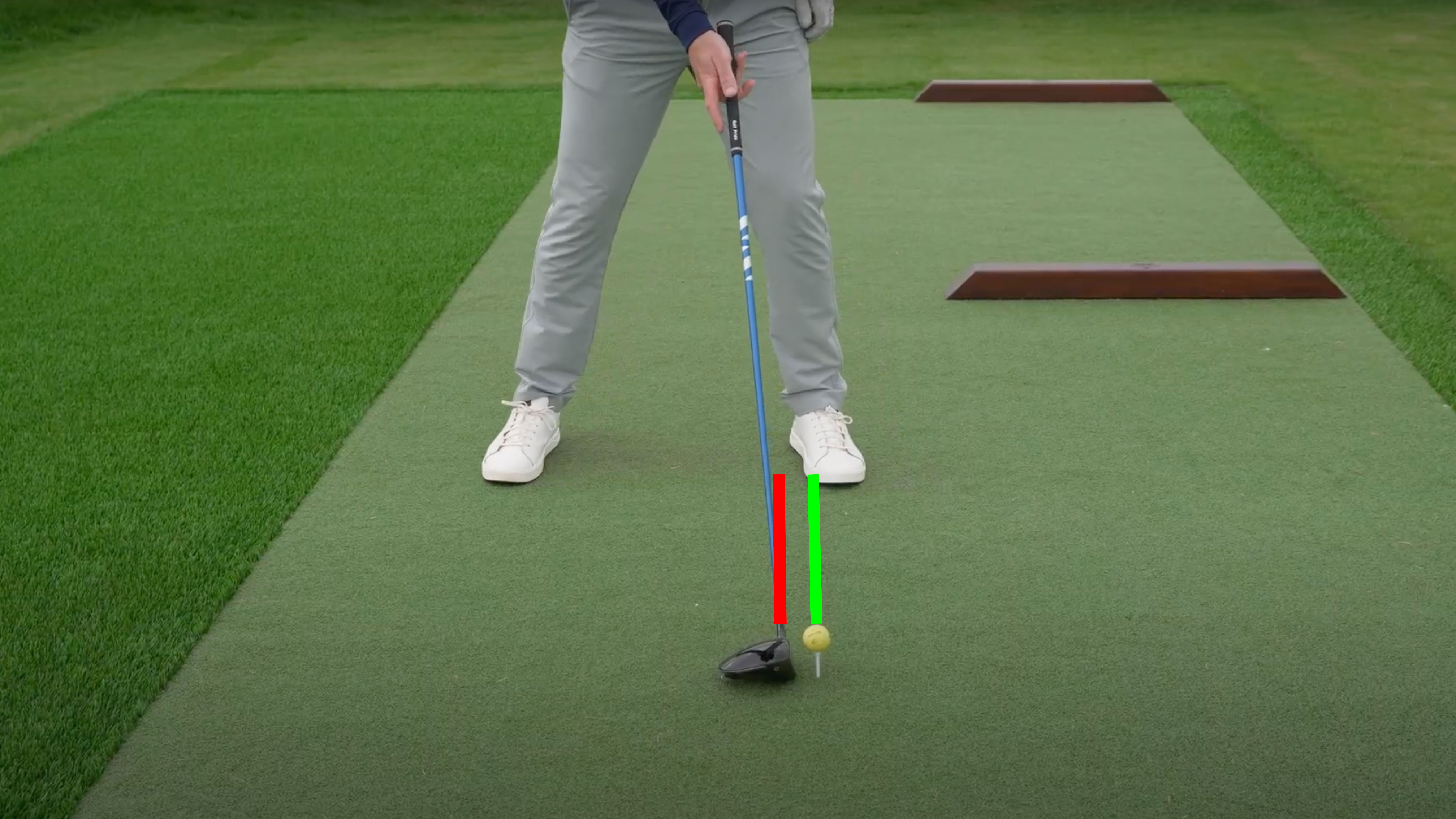
Moving the ball slightly forward is a good way to raise your angle of attack and increase launch.
Instead of his ‘normal’ ball position with the driver which is generally just inside his left heel, you will see him nudge it up to somewhere near his left toe.
All things being equal, this will set the head slightly more behind the ball and the spine angle will tilt a little more away from the ball, promoting that more upward angle of attack which will generally translate to a higher launch angle.
Subscribe to the Golf Monthly newsletter to stay up to date with all the latest tour news, equipment news, reviews, head-to-heads and buyer’s guides from our team of experienced experts.

Moving the ball forward helps to set your sternum and head behind the ball to help increase your launch angle.
Another thing Scheffler is not afraid to do when he feels a helping wind is to hit the ball a touch harder. When hitting downwind, mishits are slightly less punished from a left-to-right dispersion perspective due to less air resistance. Scheffler is aware of this, and isn’t afraid to give those downwind drives a little more oomph!
Decreasing height into the wind
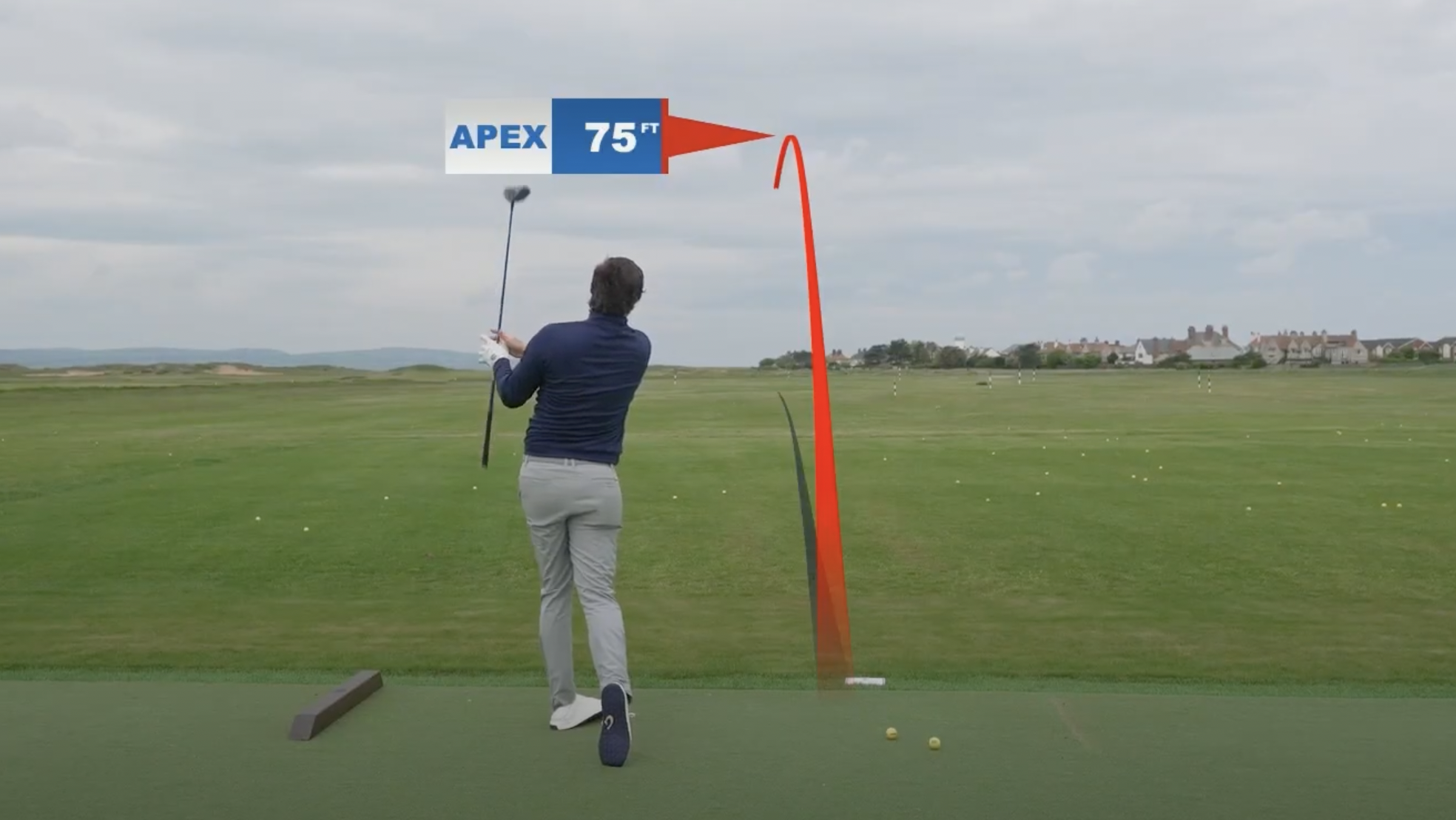
Knocking the ball down is one of Scottie Scheffler's big strengths.
As well as having the ability to raise that launch angle downwind, Scottie Scheffler is one of the best in the game at knocking height and spin off his driver when hitting into the breeze. In fact, not only does he do so when hitting into the wind, but I regularly see him knock that flight down when conditions get firm, like at The Open Championship, or the US Open in order to maximize ball roll.
To do so, he basically employs an entirely opposite strategy at setup to raising the flight. Generally, he reduces his tee height a little to encourage less of an upward attack angle, but not so much as to lower the strike location excessively on the face, as this will cause unwanted backspin.
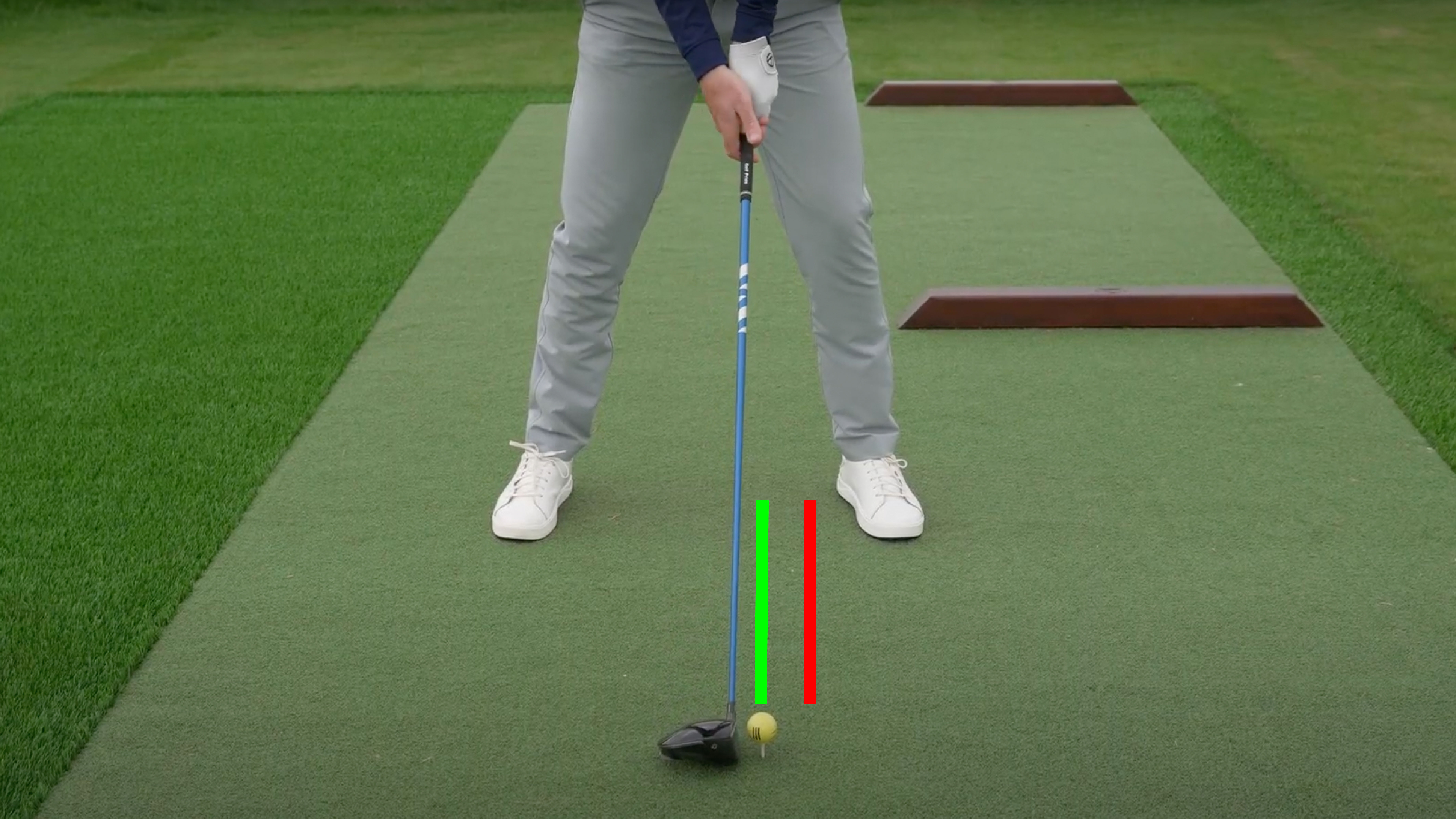
Moving the ball back in your stance helps to lower ball flight.
Scheffler will move the ball back in his stance a little to further reduce the angle of attack, but once again not too far as to create an excessive downward blow that increases spin levels.
From this position of being slightly teed down with the ball position slightly further back in his stance, Scheffler then simply makes a slightly slower, smoother swing at the ball. Speed creates spin, and the idea with this particular shot is to remove as much spin as possible to help the ball penetrate the wind more efficiently. Try these small alterations the next time you find yourself needing to bring that ball flight down.
Using fades and draws to maximize distance

Scheffler is very much a shotmaker and curves the ball both ways to suit hole shapes and maximize distance.
Scheffler is one of the most creative shotmakers in the game of golf, never being afraid to utilize both fade and draw shapes to suit the hole in front of him. Not only does the world number one do this to suit the shape of a hole, like for example the 10th at Augusta National, but he also does so to maximize his distance output. On many occasions I have seen Scheffler shape the ball to maximize wind and slope assistance. Let me explain…

Scheffler unleashing a drive down a narrow fairway.
If you are faced with a right-to-left wind as a right-hander, and you hit a fade shot, essentially the ball is spending a lot of its flight banking into the wind which can cost you distance. Scheffler is a big user of that wind and will often choose to shape the ball in the same direction as the wind so the ball can ‘ride’ the wind rather than fight it which is a great way of squeezing out more yardage. The same applies to slope. If (as a right-hander again) you fade the ball into a right-to-left slope, the first bounce is essentially bouncing uphill, however, if you turn the ball in the same direction as the slope, you can take advantage of a livelier first bounce and maximize your run out. Clever stuff right? But how does he shape the ball?
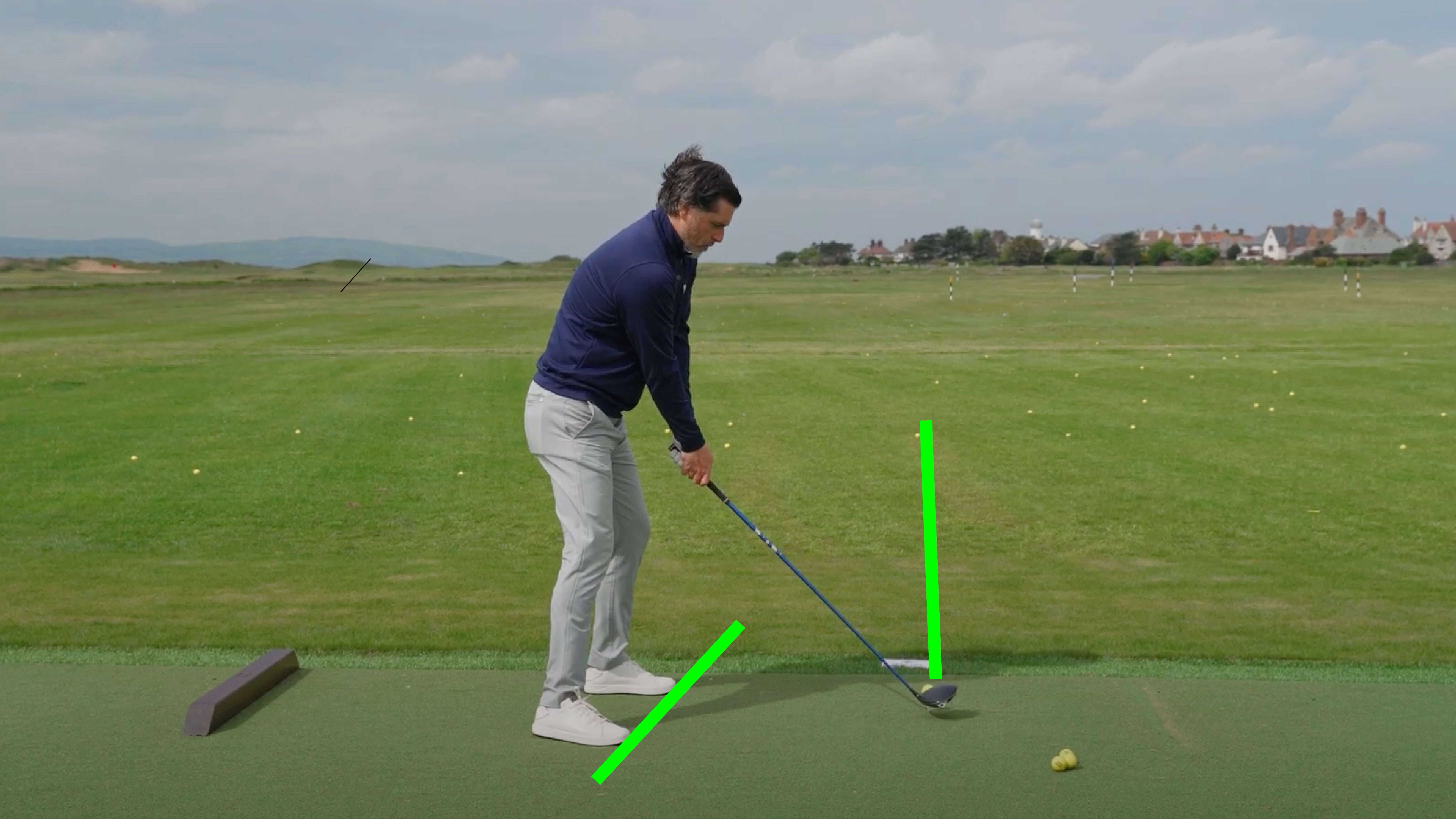
The relationship between club path and club face is the key to curving the golf ball.
Scheffler is a man who likes to keep things as simple as possible, so he makes all of his changes at setup so he doesn’t need to make any alterations to his actual golf swing. For the right-to-left shot, he understands that to create the requisite alterations to spin axis, his club face needs to be pointing left of his club path at impact. To do so, he simply aims his feet, hips, and shoulders to the right of the target to promote a club path off to the right, and he ensures that his clubface is aiming slightly left of his body alignment to manipulate that spin axis and create the draw shape required. From there, he just puts his normal, reliable swing on the ball and the setup alterations should do the rest.

Opposite shapes require opposite setups.
To fade the ball, his principles are the same, just in reverse. The spin axis needs to be tilted the other way so his body alignment goes to the left, the clubface aligns slightly to the right of that and once again his normal swing can be used. The ball should start a little left of his target before falling obediently to the right.
Next time you are practicing, have a play around with your setup to see how much you need to alter your setup to produce different ball flights. Not only can it help you navigate dogleg holes more effectively, but it can also help maximize your distance and get you driving it a little more like Scottie Scheffler.
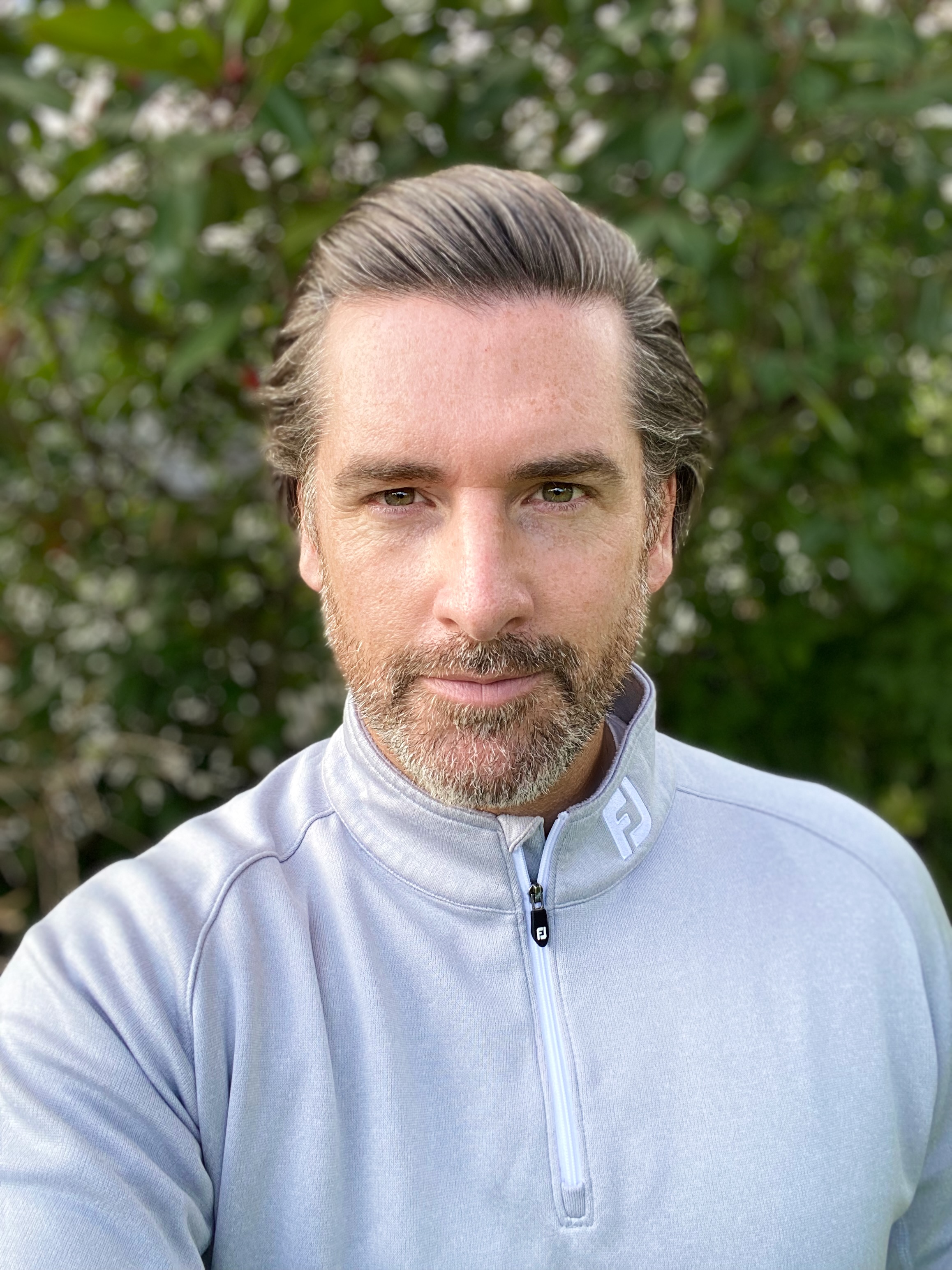
Joe has worked in the golf industry for nearly 20 years in a variety of roles. After a successful amateur career being involved in England squads at every age group, Joe completed his PGA degree qualification in 2014 as one of the top ten graduates in his training year and subsequently went on to become Head PGA Professional at Ryder Cup venue The Celtic Manor Resort. Equipment has always been a huge passion of Joe’s, and during his time at Celtic Manor, he headed up the National Fitting Centres for both Titleist and Taylormade. He’s excited to bring his knowledge of hardware to Golf Monthly in the form of equipment reviews and buying advice.
Joe lives in North Devon and still plays sporadically on the PGA West region circuit. His best round in recent years came earlier in 2023 where he managed a 9 under par 63 at Trevose GC in a Devon & Cornwall PGA Tournament.
Joe's current What's In The Bag?
Driver: Switch between TaylorMade Qi35 and Callaway Elyte TD - both with Fujikura Ventus Black 6-X
Fairway wood 1: TaylorMade BRNR Copper Mini Driver - Fujikura Ventus Black 7-X
Fairway wood 2: Callaway Apex UW 17˚- Fujikura Ventus Black 9-X
Irons: TaylorMade P7CB 3-PW with Dynamic Gold Tour Issue X100 shafts
Wedges: Callaway Opus 50, 54, and 60 degrees - Project X LS 6.0 shafts
Putter: LAB Golf Oz.1 (zero shaft lean)
Ball: TaylorMade 2024 TP5x
Grips: Golf Pride Tour Velvet 60R
Bag: Vessel Player IV Pro DXR Stand